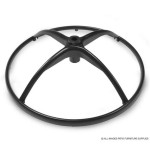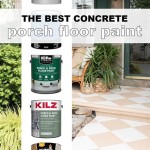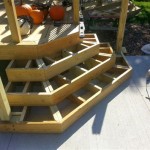Repairing Patio Screen Door Wheels With Automotive Expertise
Patio screen doors provide a vital link between indoor comfort and outdoor enjoyment. However, the smooth operation of these doors often hinges on the condition of their wheels. When these wheels degrade, malfunction, or seize, the door becomes difficult to open and close, potentially damaging the door frame and impacting the overall usability of the patio area. While seemingly a simple issue, addressing patio screen door wheel problems requires a systematic approach and, surprisingly, can benefit from techniques commonly used in automotive repair.
This article explores the process of repairing patio screen door wheels, drawing parallels and applying knowledge from automotive repair to ensure a durable and effective solution. The underlying principles of mechanics, material science, and lubrication applicable to vehicle maintenance can be readily adapted to improve the performance and longevity of patio screen door hardware.
Understanding the Problem: Diagnosing Patio Screen Door Wheel Issues
Before attempting any repairs, a thorough diagnosis is essential. Several factors can contribute to the malfunction of patio screen door wheels. Identifying the root cause will dictate the appropriate repair strategy.
One common issue is wear and tear. Over time, the wheels, typically made of plastic or nylon, can degrade due to constant friction and exposure to the elements. This wear can manifest as flat spots, cracks, or complete disintegration of the wheel material. The severity of the wear will determine whether the wheel can be repaired or needs to be replaced.
Another contributing factor is the accumulation of dirt, debris, and grime within the wheel housing and along the track. This buildup creates resistance, impeding the smooth rotation of the wheels and leading to increased wear. Regular cleaning and lubrication are crucial preventative measures.
Corrosion can also play a significant role, especially in coastal environments or areas with high humidity. Rust can form on the metal components of the wheel assembly, causing them to seize or bind. Addressing corrosion requires careful cleaning and the application of rust inhibitors.
Finally, misalignment of the door within the track can put undue stress on the wheels, leading to premature failure. If the door is not sitting squarely in the frame, the wheels will be forced to bear uneven loads, accelerating wear and potentially damaging the track itself. Inspecting the door frame and track for signs of damage or distortion is a crucial step in the diagnostic process.
The diagnostic process involves a visual inspection of the wheels, feeling for any roughness or resistance as the door is moved, and listening for any unusual noises. The condition of the track should also be assessed for obstructions or damage. This initial assessment will provide valuable information for determining the necessary course of action.
Adapting Automotive Techniques: Repairing and Replacing Patio Screen Door Wheels
Once the problem is diagnosed, the repair process can begin. The techniques used for automotive maintenance can be adapted to address these issues, ensuring a robust and long-lasting repair.
Cleaning and Lubrication:
Just as lubricating chassis components is vital in automotive maintenance, cleaning and lubricating patio screen door wheels can significantly improve their performance. Use a stiff brush to remove any accumulated dirt and debris from the wheel housing and the track. For stubborn grime, a degreaser can be applied, similar to what is used to clean engine parts. Once the area is clean and dry, apply a silicone-based lubricant to the wheels and the track. Avoid using petroleum-based lubricants, as they can attract dirt and grime, ultimately exacerbating the problem. Silicone lubricants, commonly used on automotive weather stripping and rubber components, provide a durable and water-resistant layer of protection.Wheel Replacement:
If the wheels are severely worn, cracked, or broken, replacement is necessary. Removing the old wheels typically involves loosening a set screw or removing a small clip. When selecting replacement wheels, consider the material and the bearing type. Wheels made of durable nylon or polyurethane are preferable to cheaper plastic alternatives. Some wheels feature ball bearings, which provide smoother and more efficient operation. Bearings are a common feature in automotive applications, and their incorporation into patio screen door wheels offers similar benefits in terms of reduced friction and increased longevity.Before installing the new wheels, inspect the wheel housing for any damage or corrosion. Clean and lubricate the housing to ensure smooth operation. When installing the new wheels, ensure they are properly aligned and secured. Overtightening the set screws can damage the wheel or the housing, while undertightening can allow the wheel to loosen over time.
Track Repair:
The track itself may require attention. If the track is bent or damaged, it can impede the movement of the door and prematurely wear out the wheels. Minor bends can be straightened using pliers or a small hammer, similar to how minor dents are repaired on car body panels. For more severe damage, the track may need to be replaced. When replacing the track, ensure it is properly aligned and secured to the door frame. Misalignment can cause the door to bind and put undue stress on the wheels.Addressing Corrosion:
As mentioned earlier, corrosion can significantly impact the performance of patio screen door wheels and hardware. Just as rust inhibitors are used to protect automotive components, they can also be applied to patio screen door hardware. After cleaning the corroded areas with a wire brush or sandpaper, apply a rust inhibitor or a primer designed for metal surfaces. This will help prevent future corrosion and extend the life of the hardware. Painting the hardware with a rust-resistant paint can provide an additional layer of protection.Advanced Techniques: Applying Automotive Principles for Enhanced Durability
Beyond basic repair and replacement, several advanced techniques, borrowed from automotive engineering and maintenance, can be employed to enhance the durability and performance of patio screen door wheels.
Wheel Material Selection:
Automotive engineers carefully select materials based on their specific properties and the demands of the application. Similarly, when choosing replacement wheels, consider the material properties. Wheels made of high-density polyethylene (HDPE) or polyurethane offer superior wear resistance and load-bearing capacity compared to standard plastic wheels. These materials are commonly used in automotive bushings and suspension components, where durability and resistance to wear are critical.
Bearing Upgrades:
As previously mentioned, some patio screen door wheels feature ball bearings. Upgrading to higher-quality bearings can further improve the performance and longevity of the wheels. Ceramic bearings, commonly used in high-performance automotive applications, offer reduced friction and increased resistance to wear compared to standard steel bearings. While ceramic bearings may be more expensive, they can provide a significant improvement in the smoothness and efficiency of the door operation.Custom Wheel Fabrication:
In some cases, off-the-shelf replacement wheels may not be available or may not meet the desired specifications. In such instances, custom wheel fabrication may be necessary. Using machining techniques similar to those employed in automotive fabrication, custom wheels can be created from durable materials such as aluminum or stainless steel. These custom wheels can be designed to fit the existing hardware and provide superior performance and longevity.Load Distribution Optimization:
Just as automotive engineers optimize load distribution to improve vehicle handling and stability, the load distribution on patio screen door wheels can be optimized to reduce wear and improve performance. Ensure that the door is properly aligned and that the weight is evenly distributed across all the wheels. Adding additional wheels or adjusting the wheel placement can help distribute the load more effectively. Reinforcing the door frame can also help prevent sagging or distortion, which can further improve load distribution.Protective Coatings:
Applying protective coatings can help protect the wheels and hardware from corrosion and wear. Powder coating, a common technique used in automotive manufacturing, provides a durable and corrosion-resistant finish. Applying a powder coat to the metal components of the wheel assembly can significantly extend their lifespan, especially in harsh environments. Similarly, applying a protective coating to the wheels themselves can help reduce wear and improve their resistance to abrasion.By applying these automotive-inspired techniques, a skilled individual can significantly improve the performance and longevity of patio screen door wheels, ensuring smooth and reliable operation for years to come. The key is to approach the repair process with a systematic and informed approach, drawing on the principles of mechanics, material science, and lubrication that are commonly used in automotive maintenance and engineering.

Fixing Screen Door Wheels Again

Replacing A Sliding Screen Door Roller

Sliding Door Stuck How To Replace The Rollers

Easy Way To Fix Screen Door That Won T Slide

How To Adjust A Sliding Screen Door Easy Steps

Sliding Door Roller Replacement Updated August 2025 41 Photos 62 Reviews 19121 N Us Highway Lutz Florida S Installation Phone Number Yelp

How To Adjust A Sliding Screen Door Easy Steps

Screen Door Repair Kit Fiberglass Mesh Roller Temu

Sliding Screen Door Track Rail Replacement Complete Guide

Sliding Door Stuck How To Replace The Rollers
Related Posts








